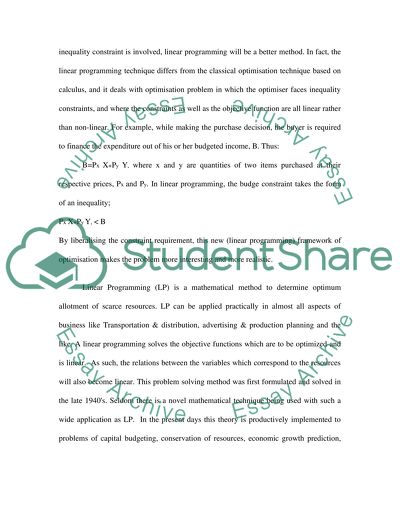Cite this document
(Linear and Non-Linear Programming Report Example | Topics and Well Written Essays - 1250 words, n.d.)
Linear and Non-Linear Programming Report Example | Topics and Well Written Essays - 1250 words. https://studentshare.org/macro-microeconomics/1522053-linear-and-non-linear-programming
Linear and Non-Linear Programming Report Example | Topics and Well Written Essays - 1250 words. https://studentshare.org/macro-microeconomics/1522053-linear-and-non-linear-programming
(Linear and Non-Linear Programming Report Example | Topics and Well Written Essays - 1250 Words)
Linear and Non-Linear Programming Report Example | Topics and Well Written Essays - 1250 Words. https://studentshare.org/macro-microeconomics/1522053-linear-and-non-linear-programming.
Linear and Non-Linear Programming Report Example | Topics and Well Written Essays - 1250 Words. https://studentshare.org/macro-microeconomics/1522053-linear-and-non-linear-programming.
“Linear and Non-Linear Programming Report Example | Topics and Well Written Essays - 1250 Words”. https://studentshare.org/macro-microeconomics/1522053-linear-and-non-linear-programming.


